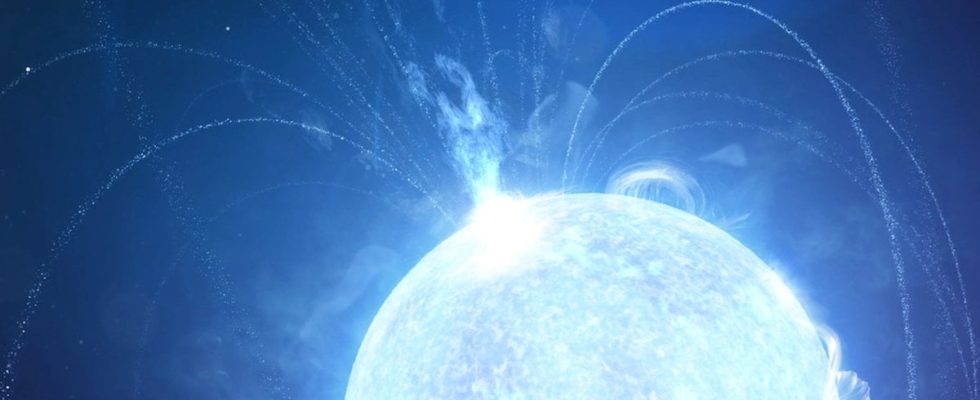Fact: Neutron stars
When a star reaches the end of its path and collapses in a supernova explosion, it can, depending on its size, result in a neutron star. As the name suggests, they consist mostly of neutrons.
It was in 1934 that the idea of neutron stars resulting from supernova explosions first appeared. In 1968, the pulsar – a type of rotating neutron star – was discovered in the famous Crab Nebula. Since then, over 1,000 neutron stars have been discovered in our galaxy.
Source: The National Encyclopedia
On February 23, 1987, an almost unique event occurred. The light from a supernova (called SN 1987A) reached Earth and for several months the star explosion could be seen with the naked eye. Not in hundreds of years had a supernova been observed at such close range.
Claes Fransson, professor at Stockholm University and lead author of an article by an international research team on the neutron star published in the scientific journal Science, has been studying the supernova since it appeared 37 years ago.
Even then, the question was what the explosion would result in. If the star is large enough, with 10–25 times the mass of the Sun, a neutron star is formed. Larger stars probably become black holes.
False alarms
But until now no evidence has been found.
— We have been looking for the neutron star since quite shortly after the explosion. There have been a number of more or less false alarms that have found it, but it has ended up being malfunctions in the equipment, he says.
The problem has been to see through the remains of the supernova, including the space dust that was in the way. But through the modern James Webb telescope, which Nasa sent into space in 2021, a light source is visible at the center of the supernova remnant, illuminated by X-ray light from the neutron star.
“It’s a bit fun to be rewarded for being patient and putting in a lot of work,” says Fransson.
Brutal compression
Put simply, it works so that when the star has gotten rid of all its fuel, it collapses in just one second into a core with a radius of 30 kilometers – and becomes as dense as an atomic nucleus. The brutal compression results in an explosion.
— It’s almost like throwing a ball on the floor. You get a bounce, says Fransson.
What remains is a core with a radius of 10 kilometers – a neutron star.
The density is incredible. If you compare it to something on Earth, it’s as if an object the size of a pinhead would weigh more than a supertanker.
But we still don’t have all the answers about SN 1987A.
“This is probably the beginning of it all,” says Claes Fransson.
Josephine Larsson at the Royal Institute of Technology is co-author of the article.
